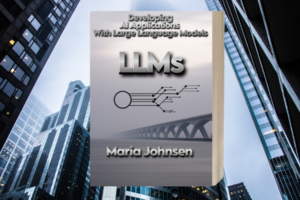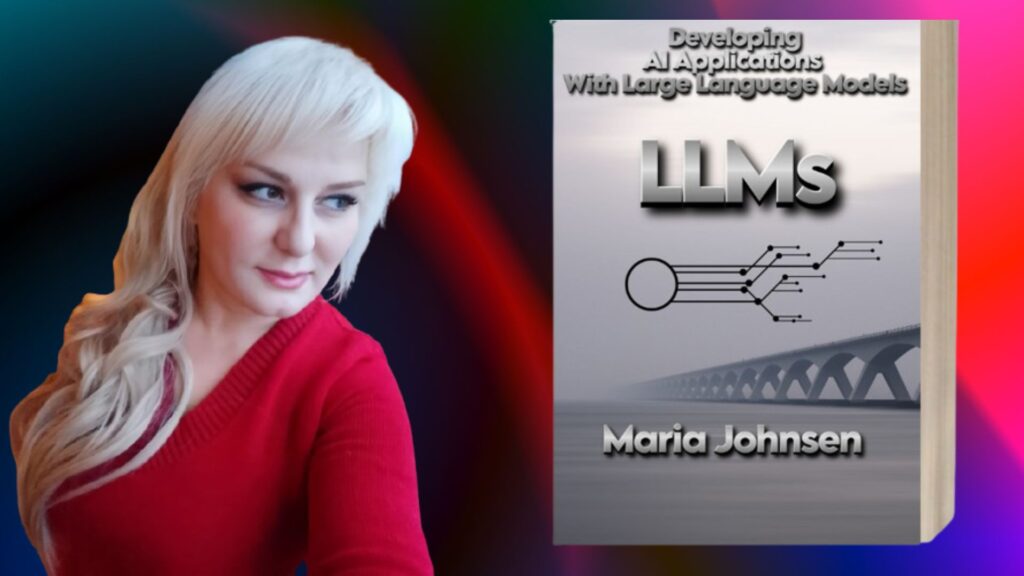Developing AI Applications with Large Language Models (LLMs)

Developing AI Applications with Large Language Models LLMs
Large Language Models (LLMs) have transformed the way we interact with AI, opening up a world of possibilities. While many assume that AI development is only for PhD-holding researchers, the reality is anyone can jump into this dynamic field with the right tools and mindset. In this book, I’ll show you how to leverage LLMs, offering a hands-on approach to building powerful applications that make a real-world impact.

Forget the jargon—this book is all about getting your hands dirty with practical implementation. Whether you’re building chatbots, virtual assistants, or tools for intelligent document analysis, I’ll walk you through every step of the way. From setting up your development environment to fine-tuning the perfect model, you’ll gain the skills and confidence needed to create AI applications across a wide range of industries—healthcare, entertainment, finance, and more.
Simplifying Complex Concepts
LLMs might seem intimidating at first, but I break down their core concepts in simple terms. From tokenization to attention mechanisms and transformer architecture, I’ll guide you through the building blocks of LLMs. Once you understand how they process and generate human language, I’ll show you how to fine-tune these models for specific tasks, helping you create more personalized and efficient AI systems.
Real-World Applications: Turning Theory Into Practice
LLMs have vast potential across industries, and I’ll demonstrate how to turn that potential into real-world applications. Whether you want to create:
- Chatbots for customer support
- Virtual assistants for smoother workflows
- Sentiment analysis tools for customer insights
- AI-powered content creation for marketing and media
- AI power application for healthcare business
- AI Power application in film production
- AI Power application in Music production
- AI power application for academics and educational institutions
- and much more.
Each example is broken down step by step, so you can easily translate these ideas into projects that deliver real value.
Tackling Ethical Issues Head-On
AI development isn’t just about what you can do—it’s about doing it responsibly. This book tackles the ethical side of AI, diving into issues like bias, fairness, and accountability. You’ll learn how to spot biases in your training data, ensure fairness in your applications, and create AI that benefits society as a whole.
Who Should Read This Book?
This book is for anyone looking to explore the world of AI:
- Developers keen to build applications like chatbots or virtual assistants.
- Researchers using LLMs for data analysis, translation, or summarization.
- Professionals in industries like healthcare, finance, or entertainment who want to leverage AI to innovate.
- Students and AI enthusiasts excited to dive deeper into AI development.
Whether you’re just starting or you’re already an experienced developer, the content is designed to meet you where you are and help you level up your skills.
Hands-On Learning for Real-World Impact
This isn’t just about understanding LLMs—it’s about applying that knowledge to create real solutions. From the setup to deployment, I guide you through every stage of the process. You’ll use frameworks, APIs, and libraries to streamline your workflow. A key focus of this book is on prompt engineering and fine-tuning—two essential techniques that let you craft inputs that shape AI behavior and adapt models for specialized tasks. These methods are critical for achieving top-notch performance.
Building AI That’s Both Powerful and Responsible
Ethics are at the heart of this book. With AI becoming an ever-present part of our lives, it’s crucial to develop responsibly. You’ll explore strategies for:
- Mitigating bias in training data
- Ensuring fairness and inclusivity
- Developing scalable AI solutions aligned with ethical standards
By focusing on these issues, you’ll be creating not only powerful AI but responsible technology that positively impacts society.
Your Pathway to Success
This book is about unlocking the power of LLMs and making AI development accessible to everyone. I’ve seen firsthand how transformative AI can be, and now, I want to share that potential with you. Whether you’re looking to expand your developer skills, dive into research, or disrupt an industry with AI-powered solutions, this book is your comprehensive guide.
By the end, you won’t just understand how LLMs work—you’ll have the practical skills to build impactful, scalable, and ethical AI applications. The possibilities are endless across sectors like healthcare, finance, entertainment, and research. The world is waiting for what you can create, and with the right tools, anyone can become an AI developer who makes a real difference.
Step into the exciting world of AI, and let this book be your gateway to turning ideas into reality. With the right guidance, you can build AI applications that change the game.
Developing AI Applications with Large Language Models LLMs
Let this book be your gateway to the exciting world of AI, and take the first step toward transforming your ideas into reality. With the right guidance, anyone can become an AI developer and create technology that makes a difference.
